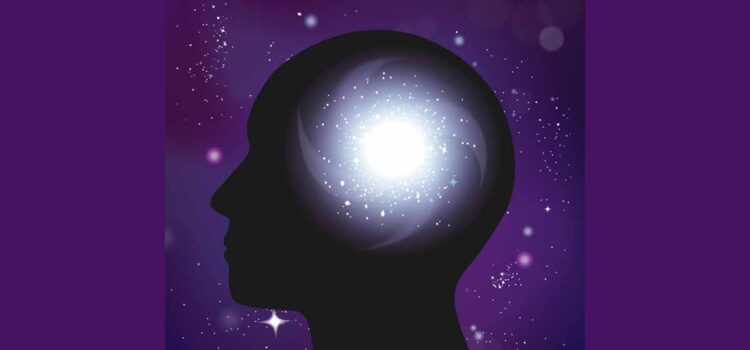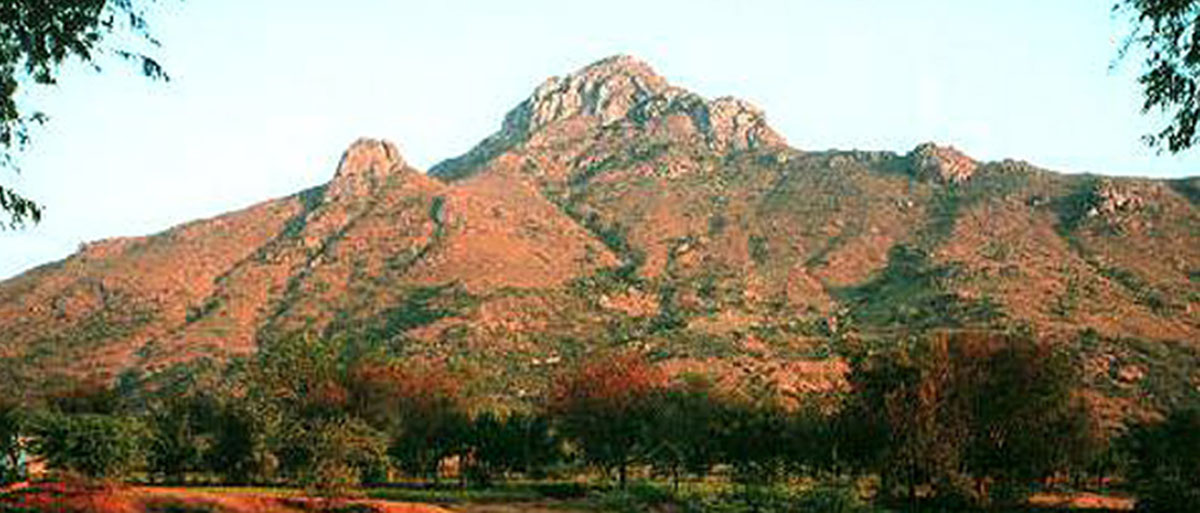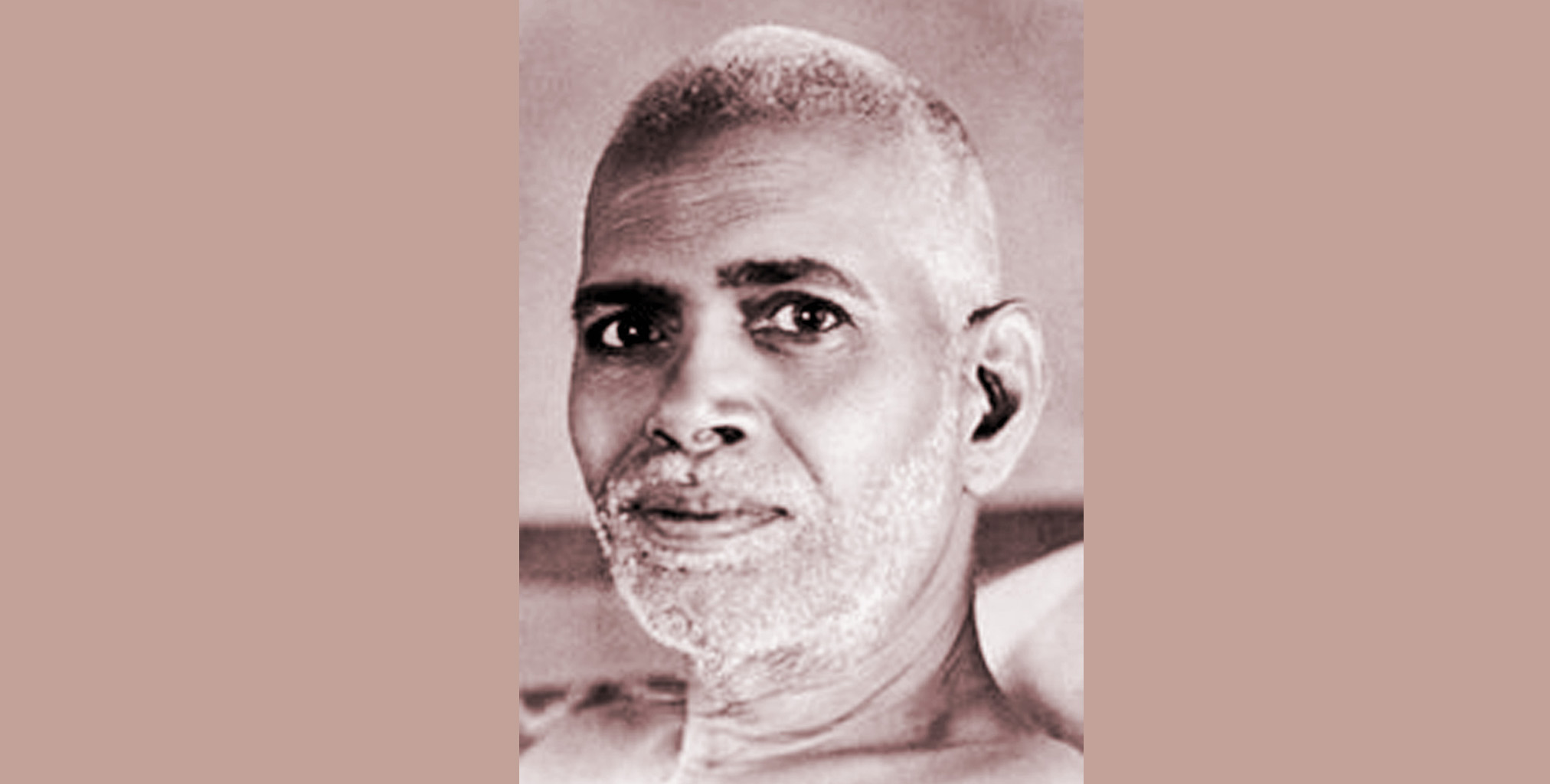
Bhagavan Sri Ramana Maharshi
Vasanas ~ What are they? How Do They Affect us? How To Eradicate Them?
Ramana Maharshi Explains Vasanas
Here are a few conversations from Talks with Ramana Maharshi, where Maharshi mentions the term Vasanas (Deep Mental Tendencies), and explains and clarifies this topic : Vasanas ~ What are they? How Do They Affect us? How To Eradicate Them?
Bhagavan also explains what Vasanas are, their importance and how they affect us. He further provides the methods to recognize, control and totally eliminate the Vasanas that are the fundamental reason for all misery and the cycle of birth and death.
========
Talks with Ramana Maharshi
========
Talk 13.
Devotee: What are the obstacles which hinder realization of the Self?
Maharshi: They are habits of mind (vasanas).
D.: How to overcome the mental habits (vasanas)?
M.: By realizing the Self.
D.: That is a vicious circle.
M.: It is the ego which raises such difficulties, creating obstacles and then suffers from the perplexity of apparent paradoxes. Find out who makes the enquiries and the Self will be found.
========
Talk 28.
D.: Distractions result from inherited tendencies. Can they be cast off too?
M.: Yes. Many have done so. Believe it! They did so because they believed they could. Vasanas (predispositions) can be obliterated. It is done by concentration on That which is free from vasanas and yet is their core.
========
Talk 80.
M.: Vasanas (predispositions), are accumulated in innumerable births before. Their annihilation is the aim. The state free from vasanas is the primal state and eternal state of purity.
D.: What if one meditates incessantly without Karma?
M.: Try and see. The vasanas will not let you do it. Dhyana comes only step by step with the gradual weakening of the vasanas by the Grace of the Master.
========
Talk 141.
M.: The Self remains veiled by vasanas and reveals itself when there are no vasanas. Owing to the fluctuation of the vasanas, jnana takes time to steady itself. Unsteady jnana is not enough to check rebirths. Jnana cannot remain unshaken side by side with vasanas. True, that in the proximity of a great master, the vasanas will cease to be active, the mind becomes still and samadhi results, similar to fire not scorching because of other devices. Thus the disciple gains true knowledge and right experience in the presence of the master. To remain unshaken in it further efforts are necessary.
========
Talk 172.
D.: Will the knowledge gained by direct experience be lost afterwards?
M.: Kaivalya Navanita says it may be lost. Experience gained without rooting out all the vasanas cannot remain steady. Efforts must be made to eradicate the vasanas. Otherwise rebirth after death takes place. Some say direct experience results from hearing from one’s master; others say it is from reflection; yet others say from one-pointedness and also from samadhi. Though they look different on the surface, ultimately they mean the same. Knowledge can remain unshaken only after all the vasanas are rooted out.
========
Talk 173.
D.: Lord, how can the grip of the ego be slackened?
M.: By not adding new vasanas to it.
D.: Any amount of japa has not slackened the grip!
M.: How so! It will duly slacken and vanish.
========
Talk 230.
D.: Can one realize the Truth by learning the scriptures and study of books?
M.: No. So long as predispositions (vasanas) remain latent in the mind, realization cannot be achieved. Sastra learning is itself a vasana. Realization is only in samadhi.
========
Talk 289.
M.: People speak of memory and oblivion of the Fullness of the Self. Oblivion and memory are only thought-forms. They will alternate so long as there are thoughts. But Reality lies beyond these. Memory or oblivion must be dependent on something. That something must be foreign too; otherwise there cannot be oblivion. It is called ‘I’ by everyone. When one looks for it, it is not found because it is not real. Hence ‘I’ is synonymous with illusion or ignorance (maya, avidya or ajnana). To know that there never was ignorance is the goal of all the spiritual teachings. Ignorance must be of one who is aware. Awareness is jnana. Jnana is eternal and natural. Ajnana is unnatural and unreal.
D.: Having heard this truth, why does not one remain content?
M.: Because samskaras have not been destroyed. Unless the samskaras cease to exist, there will always be doubt and confusion (sandeha, viparita). All efforts are directed to destroying doubt and confusion. To do so their roots must be cut. Their roots are the samskaras. These are rendered ineffective by practice as prescribed by the Guru. The Guru leaves it to the seeker to do this much so that he might himself find out that there is no ignorance. This truth mentioned is in the stage of the hearing of the Truth (sravana). That is not drudha (firm). For making it unshaken, one has to practise reflection (manana) and one-pointedness (nididhyasana). These two processes scorch the seeds of vasanas so that they are rendered ineffective.
There are vasanas in the latent state even in trance. The vasanas must be destroyed.
D.: Can there be Self-realization before the vasanas are entirely destroyed?
M.: There are two kinds of vasanas: (1) bandha hetuh, causing bondage for the ignorant, and (2) bhoga hetuh, giving enjoyment for the wise. The latter do not obstruct realization.
D.: Are the Self-realized persons reborn? e.g., Vamadeva, JadaBharata, etc.
M.: The realized ones cannot be reborn. Rebirth is due to vasanas which are binding. But they are destroyed in the state of Self-realization.
========
Talk 317.
M.: There are no two selves – for the self to speak of the non-realization of the Self.
D.: It is still theoretical to me. How shall I get the trance?
M.: Trance is only temporary in its effects. There is happiness so long as it lasts. After rising from it the old vasanas return. Unless the vasanas are destroyed in sahaja samadhi (effortless samadhi), there is no good of trance.
There are vasanas in the latent state even in trance. The vasanas must be destroyed.
D.: Can there be Self-realization before the vasanas are entirely destroyed?
M.: There are two kinds of vasanas: (1) bandha hetuh, causing bondage for the ignorant, and (2) bhoga hetuh, giving enjoyment for the wise. The latter do not obstruct realization.
D.: Are the Self-realized persons reborn? e.g., Vamadeva, JadaBharata, etc.
M.: The Realized ones cannot be reborn. Rebirth is due to vasanas which are binding. But they are destroyed in the state of Self-realization.
========
Talk 320.
M.: Self-Realization is possible only for the fit. The vasanas must be eliminated before jnana dawns. One must be like Janaka for jnana to dawn. One must be ready to sacrifice everything for the Truth. Complete renunciation is the index of fitness.
========
Talk 326.
M.: The mind is accustomed to stray outward by the force of the latent vasanas manifesting as thoughts. So long as there are vasanas contained within they must come out and exhaust themselves. The thoughts comprise the mind. Searching what the mind is, the thoughts will recoil and the seeker will know that they arise from the Self. It is the aggregate of these thoughts that we call ‘mind’. If one realizes that the thoughts arise from the Self and abide in their source, the mind will disappear. After the mind ceases to exist and bliss of peace has been realized, one will find it then as difficult to bring out a thought, as he now finds it difficult to keep out all thoughts.
========
Talk 331.
M.: Only the enquiry into the Self can be of use. Those familiar with logic, Vritti Prabhakara, Vichara Sagara or Sutra Bhashya, or similar large works, cannot relish small works like Truth Revealed dealing only with the Self and that pointedly too, because they have accumulated vasanas. Only those whose minds are less muddy, or are pure, can relish small and purposeful works.
========
Talk 383.
M.: Actions bear twofold fruits, the one for enjoyment of their fruits and the other leaving an impress on the mind in the form of samskaras for subsequent manifestation in future births. The jnani’s mind being barren cannot entertain seeds of karma. His vasanas simply exhaust themselves by activities ending in enjoyment only (bhogahetuka karma). In fact, his karma is seen only from the ajnani’s standpoint. He remains actionless only. He is not aware of the body as being apart from the Self. How can there be liberation (mukti) or bondage (bandha) for him? He is beyond both. He is not bound by karma, either now or ever. There is no jivanmukta or videhamukta according to him.
D.: From all this it looks as if a Jnani who has scorched all the vasanas is the best and that he would remain inactive like a stock or stone.
M.: No, not necessarily. Vasanas do not affect him. Is it not itself a vasana that one remains like a stock or stone? Sahaja is the state.
========
Talk 385.
D.: Should we not learn the jnani’s ways and imitate them?
M.: It is no use. Vasanas are of four kinds :
(1) Pure (Suddha), (2) Impure (malina), (3) Mixed (madhya) and (4) Good (Sat), according as the jnanis are the Supreme (varishta), the best (variya), better (vara), and good (vit). Their fruits are reaped in three ways: (1) of our own will (swechha), and by others’ will (parechha) and involuntarily (anichha). There have been jnanis like Gautama, Vyasa, Suka and Janaka.
========
Talk 392.
M.: The intricate maze of philosophy of different schools is said to clarify matters and reveal the Truth. But in fact they create confusion where no confusion need exist. To understand anything there must be the Self. The Self is obvious. Why not remain as the Self? What need to explain the non-self?
Why should confusion be created and then explained away? Ah! Fortunate is the man who does not involve himself in this maze!
I was indeed fortunate that I never took to it. Had I taken to it, I would probably be nowhere – always in confusion. My purva vasanas (former tendencies) directly took me to the enquiry “Who am I?” It was indeed fortunate!
========
Talk 442.
M.: How is the world created? Some mental impressions should be admitted. They are called vasanas. How were the vasanas in the mind? The answer is: they were subtle. Just as a whole tree is contained potentially in a seed, so the world is in the mind.
========
Talk 513.
M.: The ajnani has all kinds of vasanas, i.e., kartrtva (doership) and bhoktrtva (enjoyership), whereas the Jnani has ceased to be doer (karta). Thus only one kind of vasana obtains for him. That too is very weak and does not overpower him, because he is always aware of the Sat-Chit-Ananda nature of the Self. The tenuous bhoktrtva vasana is the only remnant of the mind left in the Jnani and he therefore appears to be living in the body.
========
Talk 515.
M.: The vasanas are of two kinds : bandha hetu (causing bondage) and bhoga hetu (only giving enjoyment). The Jnani has transcended the ego and therefore all the causes of bondage are inoperative. Bandha hetu is thus at an end and prarabdha (past karma) remains as bhoga vasana (to give enjoyment) only.
========
Talk 540.
M.: Pleasure or pain are aspects of the mind only. Our essential nature is happiness. But we have forgotten the Self and imagine that the body or the mind is the Self. It is that wrong identity that gives rise to misery.
What is to be done? This vasana is very ancient and has continued for innumerable past births. Hence it has grown strong. That must go before the essential nature, viz., happiness, asserts itself.
========
Talk 562.
M.: Every person experiences the Self consciously or unconsciously. The ajnani’s experience is clouded by his latencies whereas the jnani’s is not so. The jnani’s experience of the Self is therefore distinct and permanent.
A practiser may by long practice gain a glimpse of the Reality. This experience may be vivid for the time being. And yet he will be distracted by the old vasanas and so his experience will not avail him. Such a man must continue his manana and nididhyasana so that all the obstacles may be destroyed. He will then be able to remain permanently in the Real State.
========
Talk 569.
M.: The light of the Self-luminous Self is reflected on the Mahatattva. The reflected light is the mind-ether or the pure mind. This illumines the vasanas (latencies) of the individual and hence the sense of ‘I’ and ‘this’ arises.
========
Talk 571.
M.: The ego, the world and the individuals are all due to the person’s vasanas. When they perish, that person’s hallucinations disappear, that is to say one pitcher is broken and the relative reflection is at an end.
The fact is that the Self is never bound. There can therefore be no Release for It. All the troubles are for the ego only.
========
Talk 616.
M.: This is what happens. When a vasana is released and it comes into play, it is associated with the light of the Self. It passes from the heart to the brain, and on its way it grows more and more until it holds the field all alone and all the vasanas are thus kept in abeyance for the time being. When the thought is reflected in the brain it appears as an image on a screen. The person is then said to have a clear perception of things. He is a great thinker or discoverer.
Neither the thought that is extolled as being original, nor the thing, nor the country which is claimed to be a new discovery, is really original or new. It could not manifest unless it was already in the mind. It was of course very subtle and remained imperceptible, because it lay repressed by the more urgent or insistent thoughts or vasanas.
When they have spent themselves this thought arises and by concentration the Light of the Self makes it clear, so that it appears magnificent, original and revolutionary. In fact it was only within all along.
The world is not other than the mind, the mind is not other than the Heart; that is the whole truth. So the Heart comprises all. The source is a point without any dimensions. It expands as the cosmos on the one hand and as Infinite Bliss on the other. That point is the pivot. From it a single vasana starts, multiplies as the experiencer ‘I’, experience, and the world. The experiencer and the source are referred to in the mantra. Two birds, exactly alike, arise simultaneously.
========
Talk 623.
M.: There are five states:
(1) Sleep, (2) Before waking, a state free from thoughts, (3) Sense of happiness of that freedom from thoughts (rasasvada), (4) The internal movement of the vasanas (kashaya) and (5) Complete waking with (distraction) vikshepa. The second of those should be made permanent.
========
Talk 625.
D.: While inquiring who the ‘I’ is, I cannot hold it for any length of time.
M.: That means there are those vasanas. A dreamer dreams a dream. He sees the dream world with pleasures, pains. etc. But he wakes up and then loses all interest in the dream world. So it is with the waking world also. Just as the dream-world, being only a part of yourself and not different from you, ceases to interest you, so also the present world would cease to interest you if you awake from this waking dream (samsara) and realize that it is a part of your Self, and not an objective reality.
Because you think that you are apart from the objects around you, you desire a thing. But if you understand that the thing was only a thought-form you would no longer desire it.


